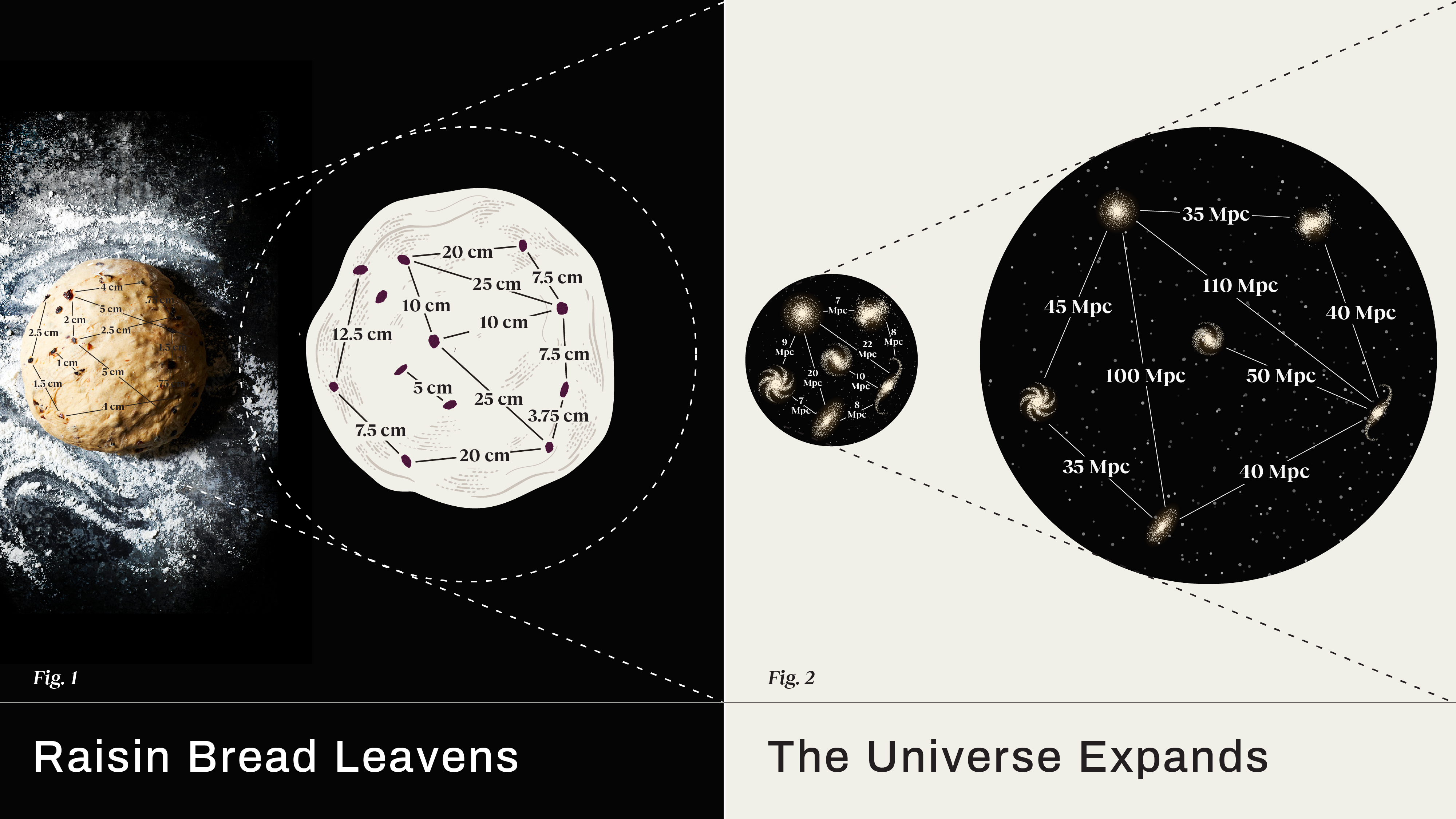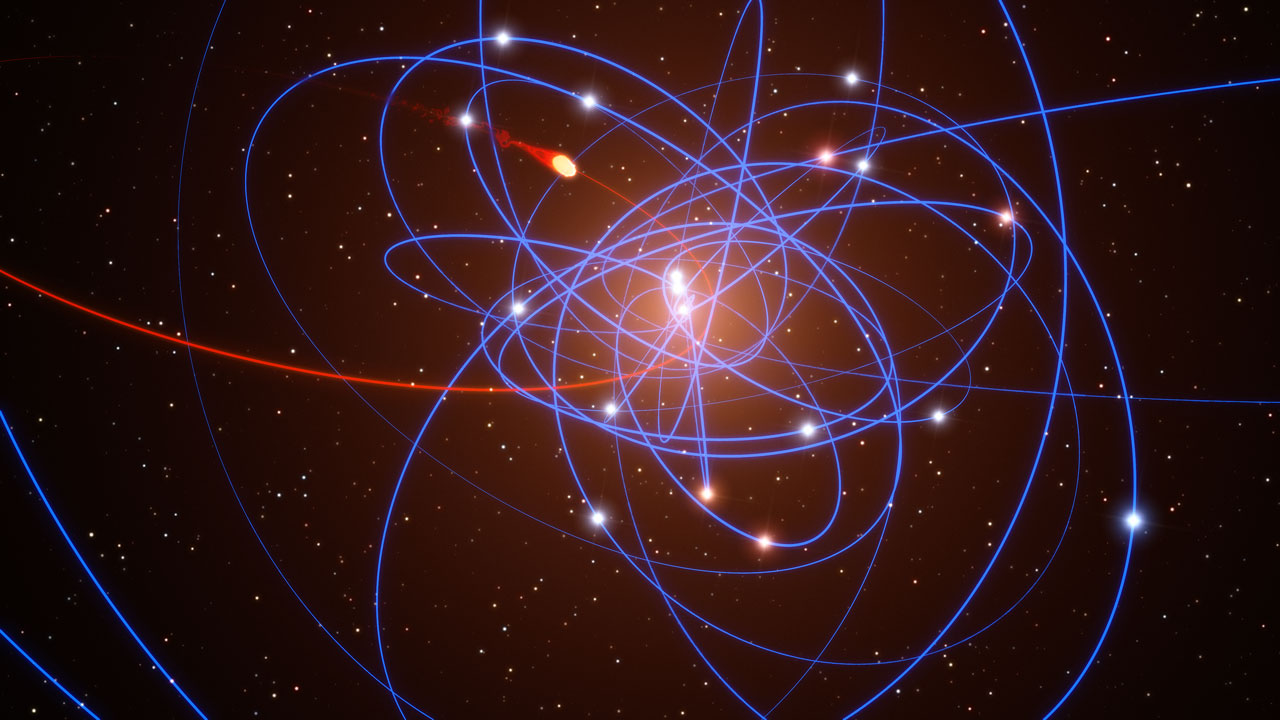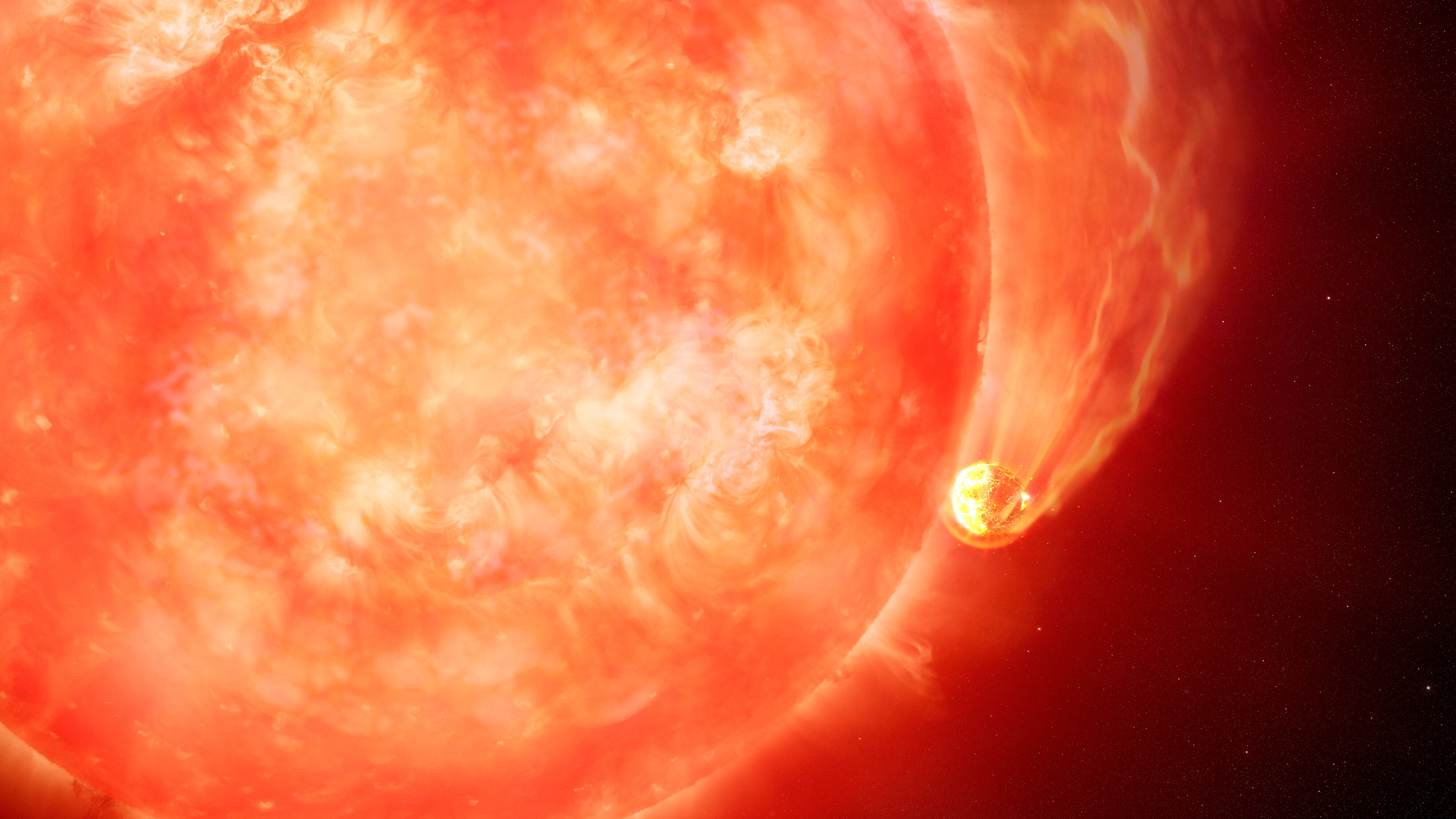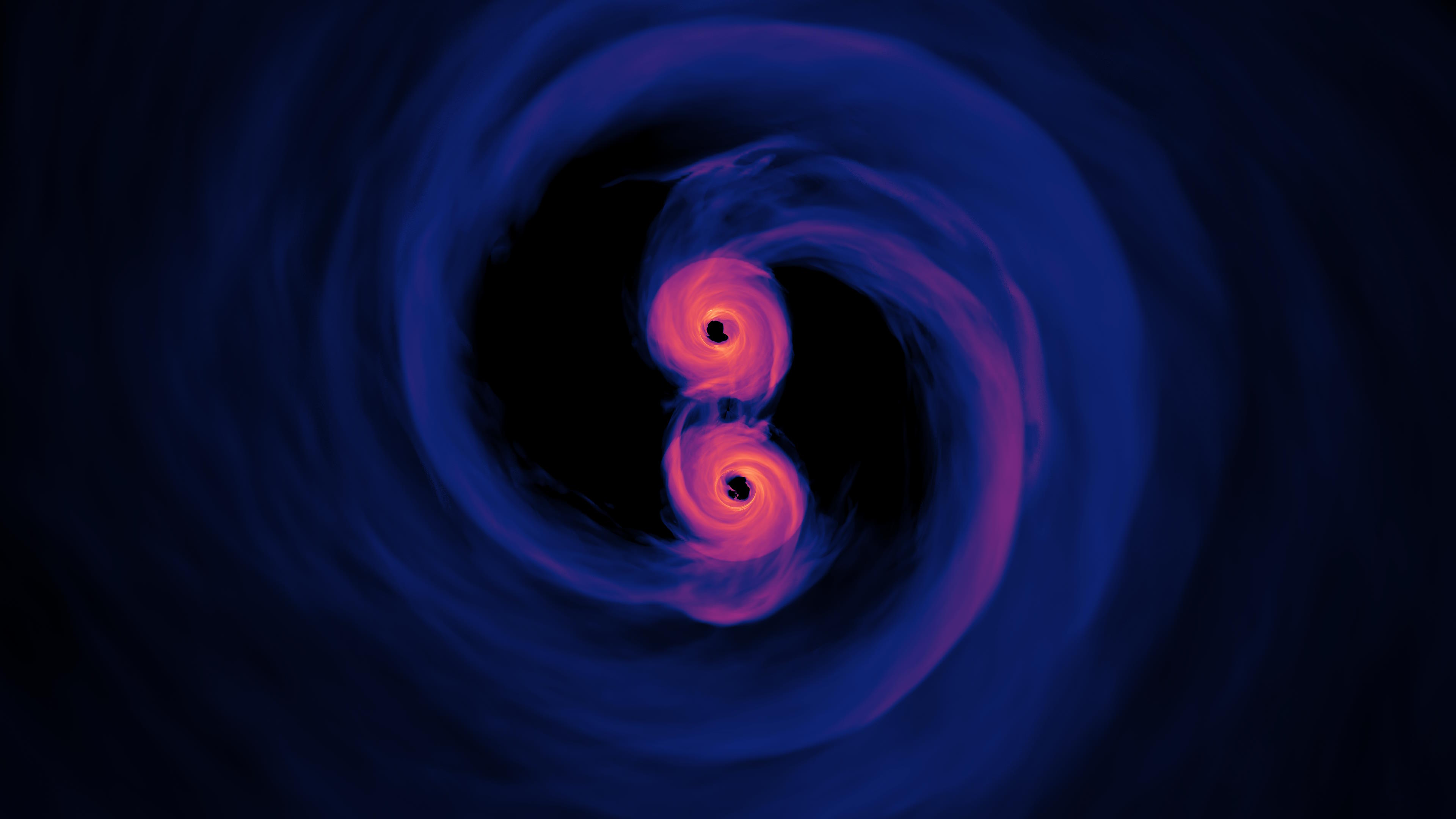Prediction of merging stars may solve one of Hubble’s greatest mysteries

What caused the incredible eruption that Hubble caught on film? A predicted merger in 5 years might show us.
“We have chased away the clouds, the sky is all ‘rose.’” –Francois Hollande
When you think about our Solar System, with its lone, luminous star dominating both the mass and light of our local corner of the Milky Way, you might think that this is what ‘typical’ looks like. In some ways, this is true, but a Solar System with multiple stars — binaries, trinaries or more — might be even more common. At interstellar distances, many of these binaries are too close together to resolve even with the most powerful of telescopes. Instead, it’s only the variations in their light, where the stars more relative to one another, periodically eclipse (passing in front of one another), or even touch one another, that allows us to figure this mystery out. Thanks to Calvin College Astronomer Larry Molnar, we can predict that one of these binaries is going to do something spectacular: merge into a single star. Moreover, it’s going to do so in a predictable fashion and on a predictable timescale, in just 5 years.
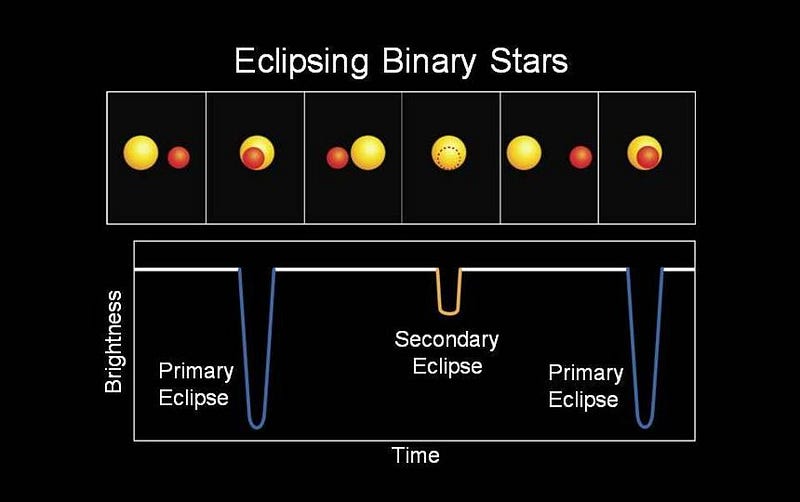
Binary stars can occur at all sorts of distances. You can have visual binaries where you can clearly see the multiple components. You can have eclipsing binaries, where one star passes in front of the other (and then vice versa), causing dips in their light curves. In fact, most of the rejected planetary candidates from the Kepler spacecraft turned out to be exactly this type.
The fastest eclipsing binaries may be so close together that their stellar envelopes actually touch one another. This last type, known as a contact binary, might be rare, but they have spectacular consequences. The denser star can wind up siphoning mass from the less dense companion, resulting in a nova, supernova or other stellar catastrophe. If the orbits are stable over long enough timescales, a fate like this may be inevitable.
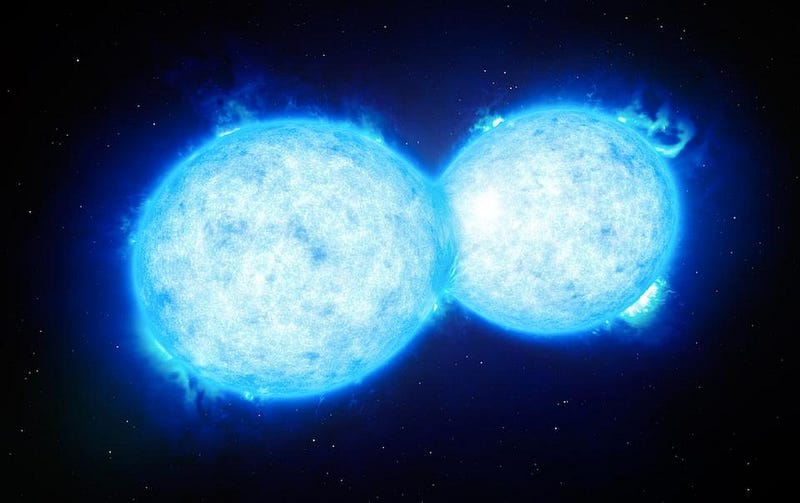
But sometimes the orbits aren’t stable at all. The extra mass that the stars run into in their orbits can slow them down, and cause the binary system to move closer together. If the two stars are close enough, their period will shorten, and they can either experience a catastrophic event or wind up merging together to form a single, more massive star. By measuring the binary system KIC 9832227, beginning in 2013, Larry Molnar and his student, Daniel Van Noord, began monitoring the star themselves. Not only was it a binary; not only was it a contact binary; but it was a contact binary whose period was increasing at an accelerating rate.
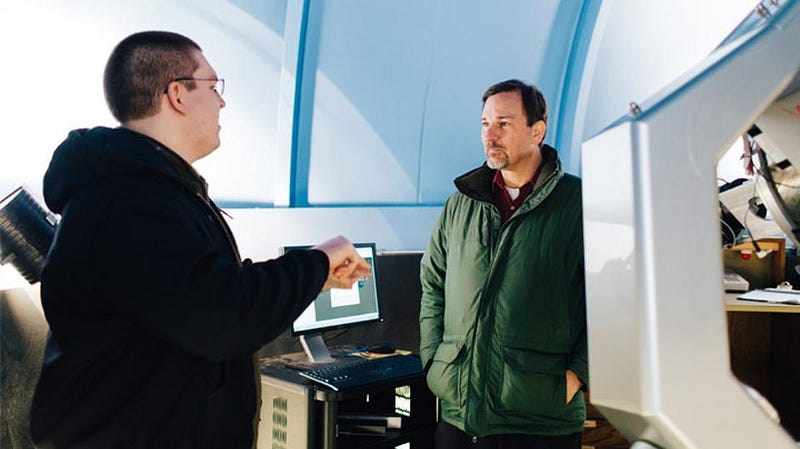
In other words, Molnar boldly predicts, we’ll be able to see these stars merge together at some point in the next few years; Molnar’s best bet is 5 ± 1 years. As Chad Orzel reports, this is an incredible find for small-college astronomy, but it’s so much more: it’s an incredible prediction for the galaxy. This type of event is thought to result in a luminous red nova, and occurs in a galaxy, on average, just a handful of times per century. In 2008, one of them occurred in the Milky Way: V1309 Scorpii, which wasn’t predicted, but just serendipitously observed.
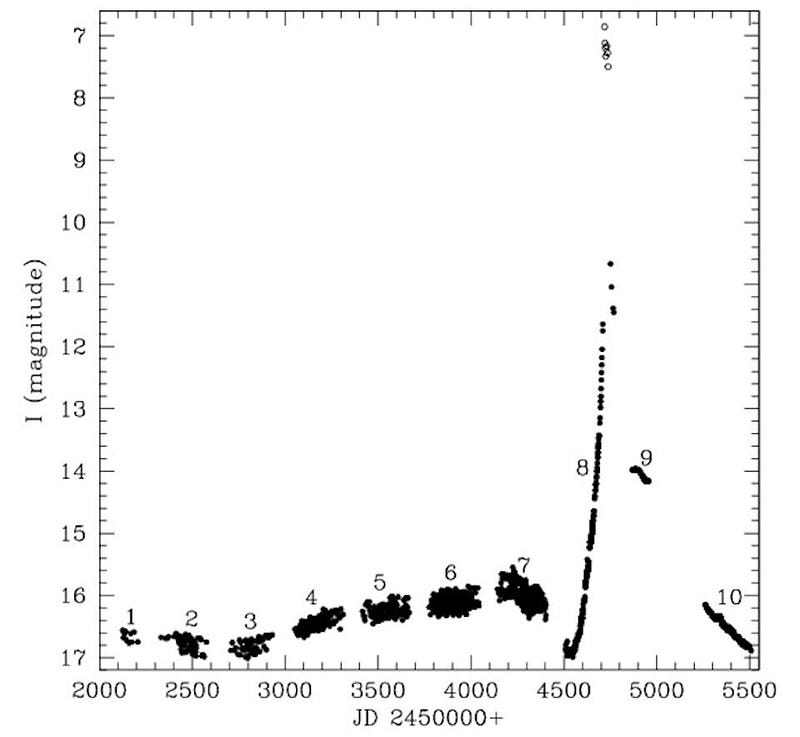
As its light curve shows, it increased in brightness — very temporarily — by a factor of around 10,000; an incredible show. In the constellation of Cygnus, this binary system currently invisible to the naked eye, KIC 9832227, may brighten by the same amount. Since it’s only 1,800 light years distant and in a relatively clear part of the sky, this star is not only expected to become visible to the naked eye, it’s expected to become one of the five brightest stars in the entire constellation.
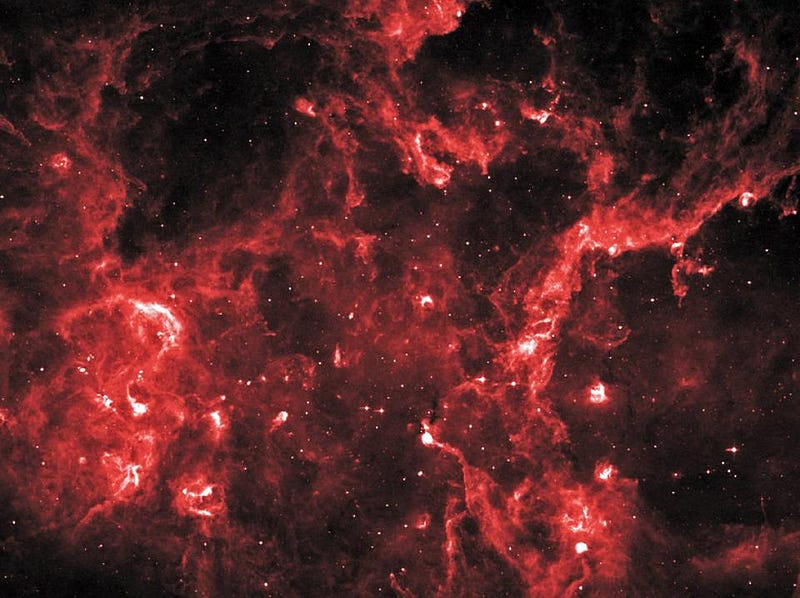
But most excitingly, this is close enough and predictable enough that we will get our best view ever of such a merger, and the resulting luminous red nova. Although you might not remember the astronomical events of 15 years ago, there was a very strange event that began in 2002 that defies a single explanation even today: the outburst of the distant star V838 Monocerotis. Even if this doesn’t ring a bell, I’m betting that the image sequence below does.
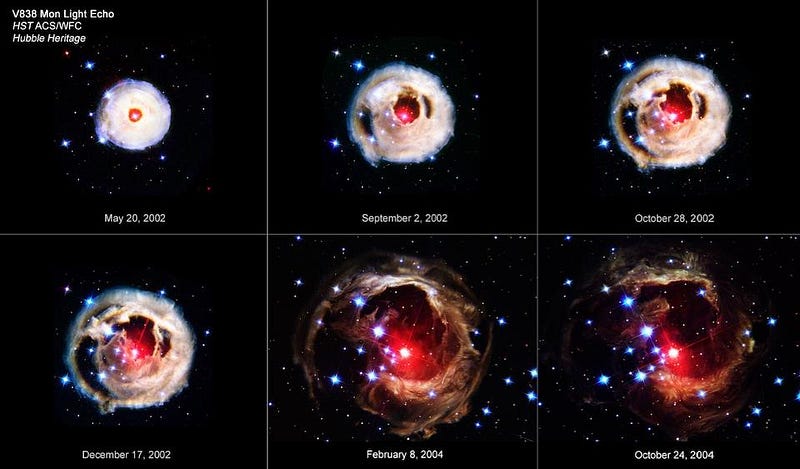
One of the leading candidate explanations for this strange outburst is that a mergeburst occurred, where two mismatched-in-mass stars merged together, producing both this spike in brightness as well as the ejecta we see in the Hubble images, above. If V838 Monocerotis did, in fact, arise from the merger of two stars in a contact binary, the upcoming merger of the stars in KIC 9832227 will be our best chance to confirm that theory. It will also be our best chance to image a contact binary merger directly, including leading up to the merger, during the merger and during the aftermath. The Universe is continuously telling its story to us in every way imaginable. The closer we observe it, the better we can piece together the story itself, and the better we can wind up understanding not only what’s going on around us, but how we fit into the great cosmic story of which we’re all a part.
This post first appeared at Forbes, and is brought to you ad-free by our Patreon supporters. Comment on our forum, & buy our first book: Beyond The Galaxy!

